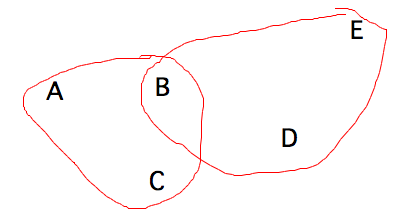- Final
- Noon - 2:30, Wednesday December 14
- Regular room
- Comprehensive, but emphasizing material since 2nd hour exam (e.g., sets, functions, relations, infinite sets, etc.)
- Designed for 2 hours (or less), you’ll have 2 1/2
- Style and rules otherwise similar to hour exams, especially open references
- ca 6 - 8 questions, including some proofs
- Maybe review session (preferably after 3:00)
- News: on the way out of class I scheduled a review session from 3:00 - 4:30 on study day, in our regular room
- Donuts and cider
- SOFIs
- 6 responses (31.58%) as of this morning
- Problem set 12 question 3?
- Start with x ∈ f(f-1(C)) and show x ∈ C
- x ∈ f( A ) means that there exists y ∈ A such that x = f(y)
- y ∈ f-1(C) means there exists z ∈ C such that f-1(z) = y
- f-1(z) = y means f(y) = z
- Section 7.3
- Recall the family relationships
- Henry VII married Elizabeth of York, and had children
- Arthur
- Margaret
- Henry VIII
- Arthur married Katherine of Aragon
- Henry VIII married Katherine of Aragon, and had child
- Mary
- Henry VIII married Anne Boleyn, and had child
- Elizabeth I
- Henry VIII married Jane Seymour, and had child
- Edward VI
- Henry VIII married Anne of Cleves
- Henry VIII married Katherine Howard
- Henry VIII married Katherine Parr
- Henry VII married Elizabeth of York, and had children
- Consider a “same father” relation F, i.e., x F y iff x and y have the same father

- Is it an equivalence relation?
- Yes, arrows from each person to self show it is reflexive, double arrows show it is symmetric, arrows between all members of triangles of children of same father show transitivity
- If so, what are its equivalence classes?
- Properties of equivalence classes?
- Everyone is in their own equivalence class
- But note that “their own equivalence class” doesn’t mean they are necessarily the only member
- Equivalence classes don’t overlap, i.e., they are disjoint
- Everyone is in their own equivalence class
- Equivalence classes partition the set of people
- “Partition” means a set of subsets that between them contain all members of set A
- But note that not all such collections of subsets are partitions: the subsets also have to be disjoint

- Is it an equivalence relation?
- Let x ∼ y for real numbers x and y iff x2 = y2. Prove that
∼ is an equivalence relation and give examples of its equivalence classes.
- Equivalence relation
- Reflexive: let x be any real number, x2 = x2
- Transitive: suppose x ∼ y and y ∼ z
- Then x2 = y2 and y2 = z2 so x2 = z2
- Therefore x ∼ z
- Symmetric: suppose x ∼ y
- Then x2 = y2 so y2 = x2
- So y ∼ x
- Equivalence classes
- For example, [2] = { 2, -2 }
- Generally, [x] = { x, -x }
- But [0] = { 0 }
- Equivalence relation
- Finite sets and cardinality
- Read section 9.1